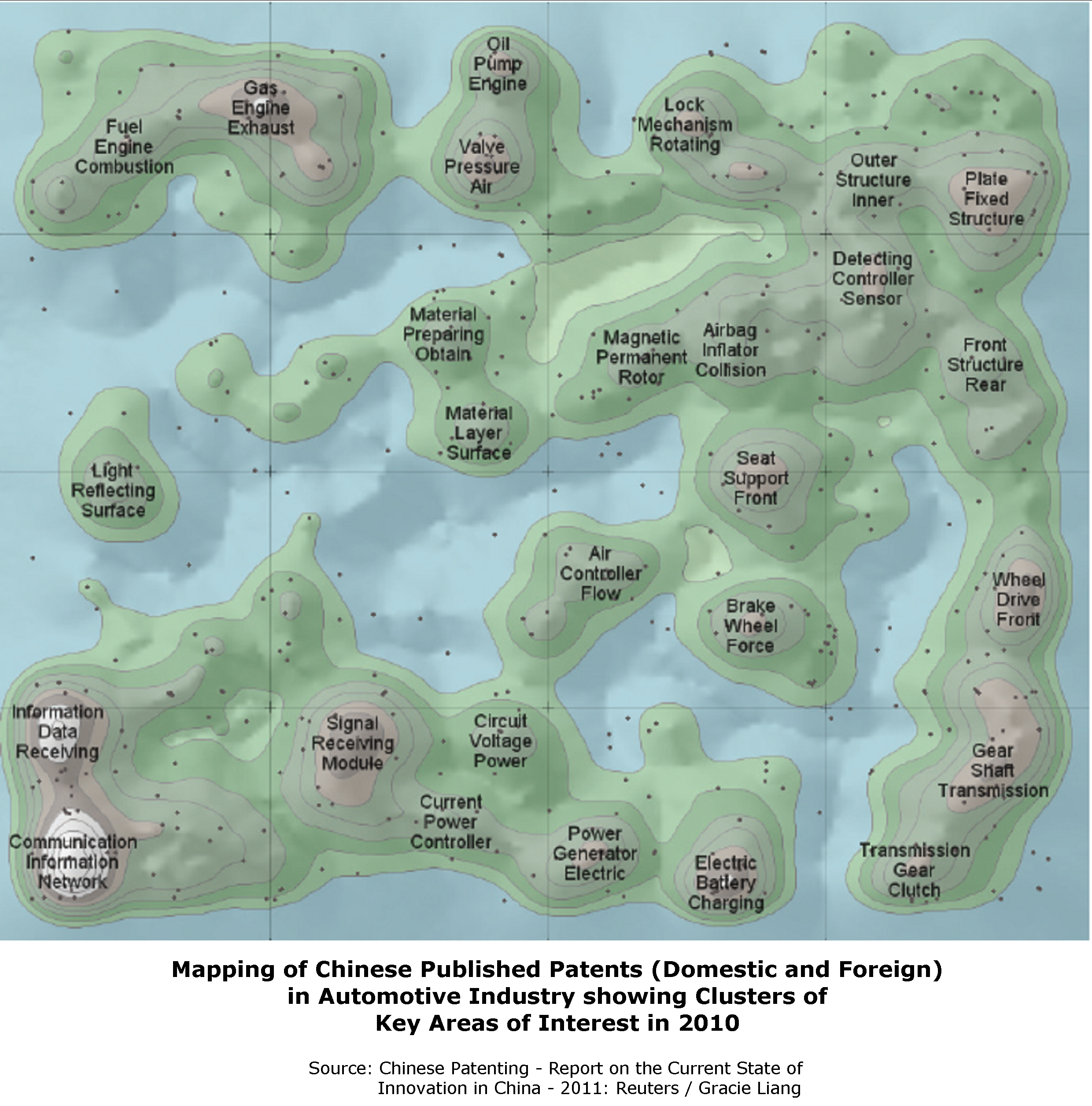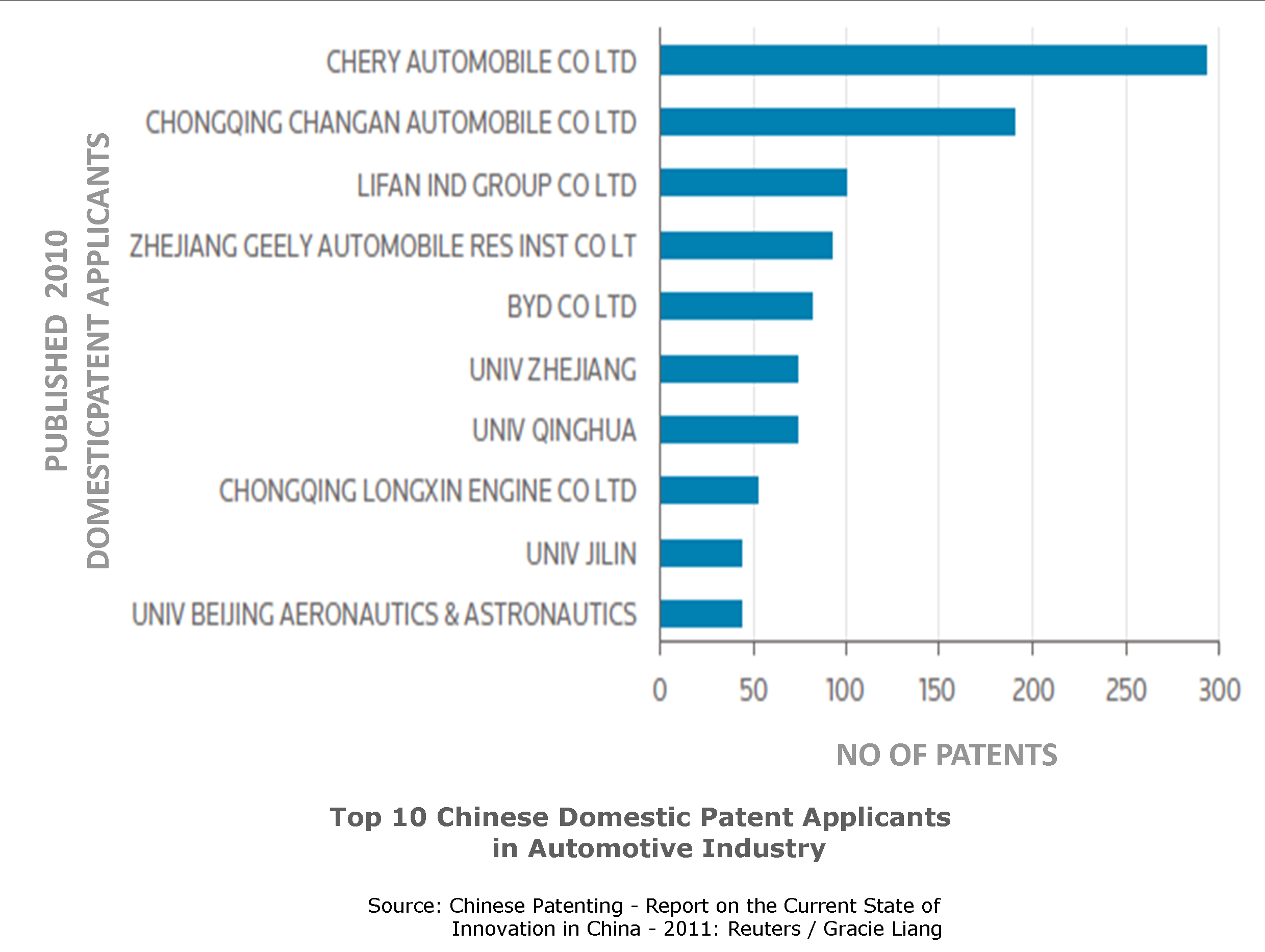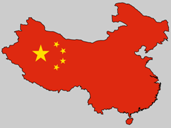Innovative China!
Dr. Rajendra Prasad25 June 2012
Introduction
The 12th Five Year Plan of China released recently aims at achieving a number of challenging goals with
an underlying motto of moving from the lable of 'Made in China' to that of 'Designed/Created in China' ostensibly to shed 'copycat' image
of the past and emerging into a country of gifted, creative and innovative minds capable of producing new designs and original
new utility products. Clearly, the state is committed to heavily invest in science, technology, education and R&D and
further develop its intellectual property rights system. In November, 2011 China also issued a 'National Patent
Development Strategy' which recognizes the existing weakness of its innovation capacity in terms of inadequate
number of core patents held by its market entities, poor mechanism of patent administration and law enforcement
as well as weak patent awareness by general public. In implementing the national patent strategy, it advocates
for scientific outlook on development while advancing China's core competitiveness by developing further its
patent system to make China an innovative country.
During the last plan itself, China set several milestones in patent filing that astounded the world by a big surprise
and many took the reported achievements with great skepticism. Thomson Reuters, a well known and trusted name in providing reliable
and well researched information on science and innovation was quick to do a study on the factors driving China's patent
boom and its value to its economy. Putting China's economic and innovation policies as well as other underlying causes
of increased innovation in the context of patent volumes and trends to an analytical framework, it brought out a report
examining the key questions. Inspired from this report, this article presets a summary of its key findings along with
additional information on the current state of affairs on IP scenario in China.
Trends in Patent Filing
According to a report published by WIPO, Intellectual property (IP) filings worldwide rebounded in
2010 after experiencing a considerable drop in 2009. All the major advanced economies registered growth in patent
and trademarks filing that exceeded their respective growth in GDP, except in Japan where the decline in growth of
patent and trademark filings was less than that in previous year. In this context, the story of China stands apart;
during 2010, the growth in its GDP was recorded as 10.3 per cent and against this it's growth in patent and trademark
filings stood at 24.3 and 29.8 per cent respectively.
During the past decade too, China experienced an average yearly growth rate of 22.6%, bringing its yearly patent
applications from 63,450 in 2001 to 391,177 in 2010, to emerge as the second largest patent office in the world;
in terms of GDP too, it was the second largest economy in 2010.
In the year 2010, China, with 293,066 resident applications, also overtook Japan (with 290,081) to become the
top country for resident applications. The US, with 241,977 resident applications, stood third in this ranking.
The US residents, however, filed the greatest numbers of applications in foreign countries whereas in China,
the applications filed in foreign countries are only about 5% of those filed within the country.
Since 1995, globally R&D expenditure has sharply grown at a rate exceeding the rate of patent filing, resulting in
downward trend in patent productivity measured as 'patents per R&D dollar' except in China, Japan and the Republic of
Korea. While majority of countries had lower patent-to-GDP ratios and patent-to-R&D dollar ratios in 2010 than in 2001,
China saw an increase in both ratios from 2001 to 2010.
In the business sector, two Chinese companies were among the top 10 PCT filers globally, with ZTE Corporation
having filed 1868 applications (2nd rank) and Huawei Technologies having filed 1527 applications (4th rank).
The prediction made by Thomson Reuters in its report published in 2008 that China would lead the world in terms
of published patent applications in 2011 has been realized as reported in its report of 2011. What is remarkable
that the number of domestic patent applications has consistently grown to outnumber the foreign patent applications
in China? During the years 2001-2005, there were more foreign patent applications than the domestic ones and since
2006 domestic patent applications dominate the foreign applications. Further, the ratio of domestic versus the
total (domestic + foreign) applications which was 51.9 per cent in 2006 rose to 72.7 per cent in 2010, so much
so that domestic applications are now nearly three times of the foreign applications.
Surge in Technological Fields
There are about a dozen technology areas where almost exponential growth in domestic patent
applications has been registered. Of these, there are four fields, namely, electrical machinery, apparatus and
energy, digital communication, computer technology and measurement instruments, in which the filing of domestic
patent applications in 2010 was in excess of 15000 rising from approx. 5000 in 2006 in each field.
In terms of global share of Chinese domestic applications (ratio of Chinese domestic applications compared to
global applications) by technology for 2006-2010, it was found that Chinese domestic pharmaceutical patents occupied
a share of close to 40% of global applications. Other important technology fields in this reckoning after pharmaceuticals
are food chemistry, basic materials chemistry, biotechnology and digital communication each occupying a share between
30-40 per cent of the global patent activity. Interestingly, a large portion of Chinese pharmaceutical patents belongs
to 'traditional medicine' but the share of non-traditional medicine is slowly increasing.
Automotive Technology Landscaping
Thomson Reuters' report also presents the results of a few interesting technology landscaping exercises based on
Chinese patent data that give valuable insights. From the automotive technology landscaping study, it was found
that among the top 10 companies in China in 2010 four are Chinese, three are Japanese, two are US, and one South
Korean; GM Global Tech Operations Inc tops this list with over 600 basic patents in 2010.
It is notable that the Chinese companies in this list are rather new comer in the global market having been
established in 1990s. These are: Chery Automobile (founded in 1997), ChongQing Changan Automobile (with roots
back to 1862, re-established in 1997), Lifan Ind Group (founded in 1997 as a motorbike unit, began car production
in 2006) and Zhejiang Geely Automobile (founded in 1994 as a motorbike unit, began car production in 2001). The
Chinese automotive landscape based on published patents (including both domestic and foreign applicants) in 2010
when mapped shows the contours of key interests of technological fields covered in these patents as in Figure 1.
The Thomson Reuter technology landscape map as shown in Figure 1 projects significant clusters for fuel, engine
combustion, exhaust technology, and electric vehicle technology but the biggest area of innovation are in automotive
information and communication technology. It has been reported that Chinese company Beijing CenNavi Technologies Co.
Ltd. is responsible for much of this activity which is aggressively patenting navigable map technology with real-time
updating of traffic information.
Looking exclusively the domestic patent filing in automotive sector, the top ten filers as shown in Figure 2
provides another important insight. In addition to the prominent Chinese automotive companies described before,
a few more Chinese companies and institutions appear as important contributors. More importantly, however,
it is observed that four Chinese universities are also significant contributors in innovations in the automotive
sector. It has been reported that the patent portfolio of University of Zhejiang cover a wide and diverse range
of fields such as electric vehicle technology, air conditioning, clutch, braking, exhaust, flywheel energy storage systems etc.
The current scenario of overwhelming high technology innovations in China should not come with a surprise,
considering the erstwhile observations made in the Thomson Reuter study in 2008 which stated that a major
shift was occurring in patent filings: agri-based innovation related to food technology grew much more
slowly than high-technology innovation. There was a 4,861 per cent increase in domestic Chinese patent
applications in digital computers during 1998 to 2008, as against a modest increase of 552 per cent in
natural products during same period.
Chinese IP System
The current establishment in China seems to have realized that a well functioning IP system is essential for the country's
progress on industrial competitiveness and socio-economic development. Three decades ago, a modern IP system emerged in China
with the implementation of agenda of reforms and economic liberalization. It is remarkable to see China, with one of the youngest
IP system, leading the world full of countries with centuries of experience in IP law and enforcement. The trademark law was
promulgated in 1982, the patent law in 1985 and the copyright law in 1990. Since then, it has also enacted laws to protect
geographical indications (GI), trade secrets, new plant varieties and layout designs of integrated circuits. After accession
to the World Trade Organization (WTO) in 2001, China amended its IP laws in line with its international commitments.
The existing patent system in China provides three types of patent rights: invention, utility model and design. An
invention patent in China is similar to a US utility patent and protects an invention related to product or process
offering technical solution to a problem which is characterized by 'novelty', 'inventiveness' and 'industrial usefulness';
the protection for such a patent, if granted is for a period of 20 years. An application for 'invention patent' is
substantively examined and can take 3 - 5 years before it is granted. A 'utility model' patent in China, on the other
hand, covers a new technical solution just as for a regular 'invention patent' but is not subject to substantive examination and is granted soon after a formal examination of administrative nature that may take an year or less. The 'utility model' patent in China has a 10-year term. The Chinese 'utility model' patent is similar in scope and legal requirements to such patents granted in many other countries by similar or some other names' for example, Australian 'innovation patent' is quite like the Chinese 'utility model' patent. A design patent in China is virtually the same as in other countries and is granted on the ornamental design (shape!) of a functional item. Thus protection for any "new design of a product's shape, pattern, or combination thereof is provide by Chinese design patents for a term of 10 years.
Between 'invention patent' and 'utility model patent', the latter is the most preferred among the Chinese applicants.
According to State Intellectual Property Office (SIPO), 99.3% of all utility model applications in 2008 were filed by
Chinese applicants whereas the remaining (0.7%) were filed by foreign applicants. This is clearly due to the fact that
'inventiveness' threshold for the latter is much lower and the examination process for grant of patents much less
rigorous. Thus, not everyone in China is on the top end of new inventions; nevertheless, there is a huge population
falling in the middle bracket of 'innovation' around their products or process which may or may not have new elements of inventions.
The Dark Side of Innovation
Thanks to unrelenting efforts of Chinese political establishment, a sound IP system consistent with international norms
and fully compatible with country's development needs is now operational which came into being at an unprecedented pace.
With three major revisions - in 1992, 2000 and 2008 - China's patent law has become increasingly comprehensive. It is not
only being extensively used by locals but also by global innovators and foreign companies alike. A cumulative total of 1
million patent filings from foreign applicants are known to have been received by September 2010.
Such a comprehensive and overwhelming system, however, cannot grow without its attendant problems. The underside of
such an otherwise bright story is full of large scale production of counterfeit products, patent piracy and infringement.
Much of this problem has its legacy of shoddy past of the country when there was no IP system and copying anything was
the way of life. The image make-over from a country that 'makes everything' to that 'fakes everything' took place when
all sorts of goods as knock-offs of well known international brands began making their way around the globe. The
counterfeiting in China is now believed to be at such a large scale that many believe that officials would be reluctant
to check it completely and effectively for fear of putting millions out of job. An associated issue with production of
counterfeit goods is patent piracy and infringement that is prevalent in China since there is a large population that
has no understanding or respect of patent rights.
An interesting story1 appeared on 29 March 2012 in the Financial Times (FT.Com) wherein one Mr Xu Song obtained
as many as 799 Chinese furniture design patents, none of which are his own creation. The concerned location is 'Dongfeng',
a village in China's eastern Jiangsu province. This is a village where almost every household makes furniture that are
sold online. Everyone in that business is expert in copying designs of well known European, Korean and Japanese brands.
Until Mr Xu launched his offensive of acquiring patents of all available designs (which is, in fact, far too simple unlike
obtaining invention patents), no one in the village knew what a patent was. With legal rights of his design patents, Mr Xu
can exert removal of these products from the e-commerce website. Ironically, Mr Xu is quite candid on his achievement and
tells openly that he did not copy any design unlike his fellow villagers but merely registered the designs.
Somewhat similar is the case with 'utility model patents'; many Chinese companies have been reported to be interloping
with American and European patented inventions and taking 'utility model patents' in their names, especially where the
original inventors fail to register their patents in China. Based on such bogus patents in their name, these Chinese
companies prevent others, including the original foreign inventors, from producing any products in China.
Clearly, stories of Mr Xu and the like are anti-thesis of the knowledge-economy, the Chinese Leaders are determined
to build and the Government seems to have a huge problem at hand in tackling this menace. Thus despite improvements
in its IP system, China continues to struggle to put in place an effective IP enforcement machinery; the Chinese court
system is stated to be still very archaic and sluggish which rely on original notarized documents only. Further,
China-born native lawyers are only allowed to practice in Chinese courts. These problems are major concerns not
just for the country looking forward to build a sound knowledge economy but for other countries as well who are
keen to invest in Chinese economy. Many advanced countries on their websites in China therefore tend to provide
lot of information, with FAQs and 'Dos and Donts' with regard to the safeguard of IP for companies interested in
doing business in China. European Union, for example, jointly with Chinese Government ran a project known as IPR2
during 2007-11 on the protection of intellectual property rights in China. This project targeted the reliability,
efficiency and accessibility of the IP protection system, aimed at establishing a sustainable environment for effective
IPR enforcement in China and its website now is a rich source of documents IP protection and judicial enforcement in China.
Chinese Ministry of Commerce for some time now has been reeling statistics with a downward trend of on counterfeit
goods sold and copyright violations as a result of the efforts of crackdown. In May 2012, China issued a notification
on 'Key Points of Work on Combating Intellectual Property Infringement and the Manufacture and Sales of Counterfeit
and Shoddy Commodities Nationwide for 2012 (hereinafter referred to as the Key Points)' according to which gigantic
efforts in protecting intellectual property rights, particularly in cracking down upon patent violations regarding
collective and repeated infringement, as well as patent piracy and fraud are being launched now. These initiatives
are expected in series of campaigns on infringements and counterfeits, reinforcing criminal and judicial enforcement,
establishment of permanent protection mechanisms and building infrastructures for effective legal dispensation.
Retrieval of Chinese Patents
Looking through Chinese patents is obviously of interest, especially for researchers and Patent Consultants when this
has come about as a formidable resource. The Asian Desk of the European Patent Office3 provides excellent notes and
guidance on how to search and download Chinese patents. There are quite a few databases from where relevant patents
can be searched and retrieved. The EPO website provides screen-shots of search windows of Chinese patent databases with
comment boxes in English to make the reader familiar with the types of search windows and how to input the search strings.
Invariably, however, the search results with list of patents and further description of these patents are also in Chinese.
Thus one needs to get familiar with searching these patents and also get used to get relevant portions translated by copying
and pasting in suitable online translation software.
A much simpler way of looking through Chinese patents is also now available that provides instant machine-translations
at CPRS database of China Patent Information Centre (CPIC) that went online since 31 December 2011. This database
provides Chinese data on patents, utility models and designs is available from 1985 onwards which can also be downloaded
in pdf format. Its instant machine translation feature, however, is absolutely cool and provides a seamless connection
to Chinese innovation.
Conclusion
With remarkable success of Chinese leadership in the 'innovation' space through previous five year
plans, the world now awaits to see some major scientific breakthrough coming out from China in its 12th plan period.
--------------------
1 Villagers fight over patents in rural China
2 http://www.ipr2.org/
3 http://www.epo.org/searching/asian/china/search.html
Further Reading
Chinese Patenting - Report on the Current State of Innovation in China - 2011: Reuters/Gracie Liang
World Intellectual Property Indicators - 2011: World Intellectual Property Organization, Geneva


